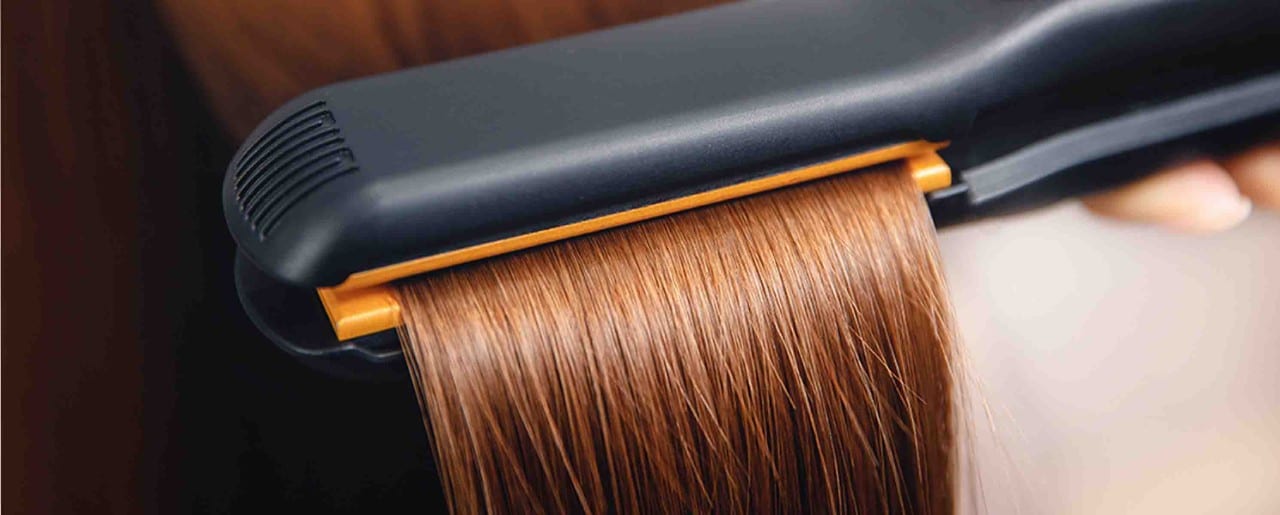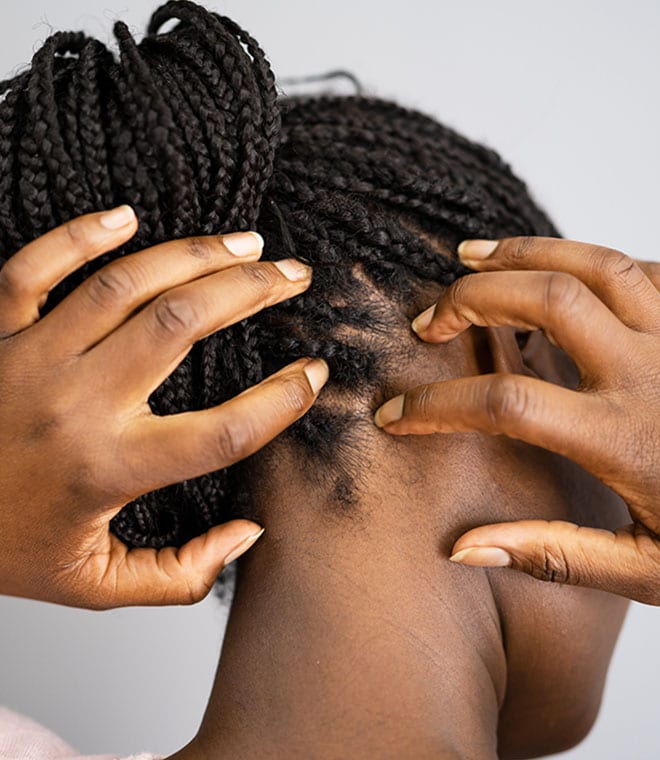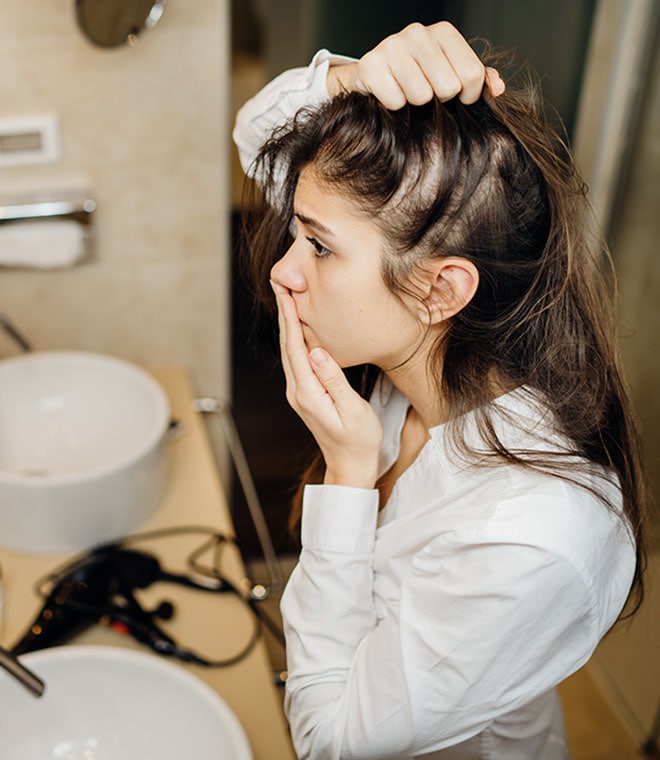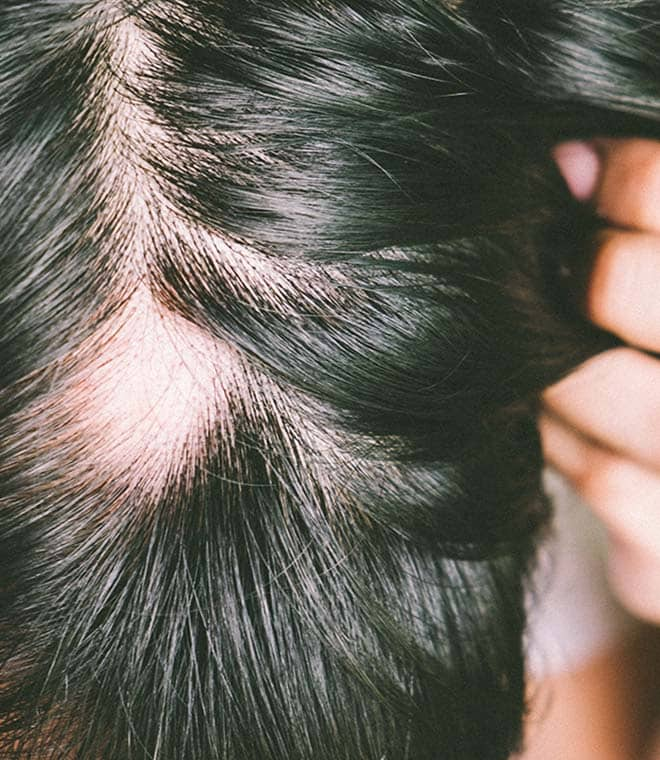Health
What causes damage to hair follicles?
By Anna H. Chacon, MD, Fellow of the American Academy of Dermatology Feb 07, 2025 • 5 min
Hair follicles are structures located within the openings in the skin where hair grows. If follicles become damaged, thinning hair and hair loss may occur. Understanding the causes of damaged follicles can help you take steps to protect your hair and scalp.
Trauma to the scalp
A surgical incision or wound that causes trauma to the scalp, such as intense scratching, may damage hair follicles. During the healing process, a scar usually develops in the area of the wound or incision. Scar tissue does not contain hair follicles. This usually results in balding in the affected area.
Thermal styling tools
Heat from thermal styling tools may inflame and damage hair follicles. Blow dryers, flat irons and curling irons can also weaken hair strands, making them more likely to split and break. Air-drying hair when possible and using thermal styling tools on the lowest setting may reduce the risk of damage.
Chemical treatments
Permanents, hair dyes, relaxants and other chemical treatments can damage hair follicles and the hair itself and can lead to hair thinning and hair loss. Repeated treatments can destroy a follicle, leaving it unable to regrow hair in the future. This means that bald spots that develop may be permanent. Choosing only one chemical treatment and waiting longer between touch-ups may reduce the chances of serious damage.
Certain hairstyles
Wearing your hair in tightly pulled back hairstyles can put stress on the hair follicles. Persistent stress can result in damage and permanent hair loss called traction alopecia. Most often, this type of hair loss occurs along the hairline above the forehead and at the temples. Keeping braids, ponytails, buns and other pulled-up hairstyles loose and trying different hairstyles that don’t pull your hair tightly can reduce stress on the follicles to protect hair.
Pulling hairs
Trichotillomania is a mental health disorder that causes an urge to pluck hairs from the scalp, eyelashes and other areas of the body. Often, people with trichotillomania pull hairs out when they are under stress or feeling intense emotions. Repeatedly pulling out hairs can damage hair follicles, leading to thinning hair and hair loss. If the hair follicles become destroyed, hair loss may be permanent. Therapy and medications can help people with trichotillomania cope with their urges.
Scarring alopecia
Another potential source of damage to hair follicles, scarring alopecia (also known as cicatricial alopecia) is a group of medical conditions marked by severe scalp inflammation and permanent hair loss. The cause of scarring alopecia is not fully understood. However, infections, chemical hair treatments and autoimmune diseases may be potential triggers. Once follicles become scarred, hair usually can't regrow in the area. Prescription medications that reduce inflammation may help prevent future damage, so it’s important that people with scarring alopecia seek treatment as soon as they notice hair thinning or excessive shedding.
Cancer treatment
Radiation and chemotherapy for cancer treatment aims to halt or rid the body of fast-growing cancer cells. Unfortunately, hair follicles are also fast-growing and may become damaged as a side effect of cancer treatment. This often leads to hair thinning or significant hair loss. Hair typically begins to regrow several weeks after chemotherapy treatment ends. Wearing a cooling cap during chemotherapy treatment may help slow down hair loss.
While chemotherapy can cause hair loss all over the body, radiation therapy may only affect certain areas of the body. Hair loss due to radiation therapy may be permanent, depending on the type and dose of treatment. Higher doses of radiation may be more likely to cause permanent hair loss. Healthcare providers may recommend over-the-counter hair and scalp treatments with the topical medication minoxidil to support hair regrowth following cancer treatment.
If you believe your hair follicles are damaged or experiencing hair loss, schedule an appointment with your healthcare provider. They can conduct an examination and may order blood work or perform other testing to determine the cause of thinning hair or hair loss. Then, they can develop a treatment regimen to support regrowth and protect your remaining hair follicles as much as possible. Treatments for hair loss vary based on the cause of hair loss and may include prescription medications, topical over-the-counter medications, laser therapy and other interventions.
Updated by Julie McDaniel, MSN, RN, CRNI, February 2025.
Sources:
- https://www.oncolink.org/support/side-effects/skin-hair-nail-side-effects/hair-loss-alopecia-from-radiation-treatment
- https://www.mayoclinic.org/tests-procedures/chemotherapy/in-depth/hair-loss/art-20046920
- https://www.aad.org/public/diseases/hair-loss/causes/hairstyles
- https://www.mayoclinic.org/diseases-conditions/trichotillomania/diagnosis-treatment/drc-20355193
- https://www.aad.org/public/everyday-care/hair-scalp-care/hair/habits-that-damage-hair
- https://www.ncbi.nlm.nih.gov/books/NBK470321/
- https://www.aad.org/public/diseases/hair-loss/causes/18-causes
- https://www.cancer.org/cancer/managing-cancer/side-effects/hair-skin-nails/hair-loss/cold-caps.html
- https://www.aad.org/public/diseases/hair-loss/insider/stop-damage
- https://www.aad.org/public/diseases/hair-loss/types/ccca/causes
- https://www.health.harvard.edu/a_to_z/hair-loss-a-to-z




